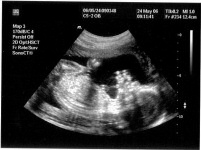 Pre-existing Hypertension: Pre-existing Hypertension:
The earliest concern for women who have pre-existing hypertension is the effect their medication may have on their unborn babies. The drugs that need to be stopped immediately are the classes of ACE inhibitors (such as ramipril, perindopril, lisinopril), ARBs (such as candesartan, irbesartan, losartan, temisartan), and diuretics. These drugs can be associated with subsequent abnormalities of the child. They need to be replaced with other classes of medication, so please seek medical advice promptly. Commonly used drugs to treat blood hypertension in pregnancy include Methyldopa and beta blockers, as they are not associated with harm to the baby.
During the pregnancy, the aim is to maintain blood pressure less than 150/100 mmHg, but regular enhanced supervision of the pregnancy will be required. This includes fetal monitoring at around 28 weeks and 32 weeks. It is important to avoid undue lowering of blood pressure (less than 80 mmHg) as well as elevation in blood pressure. Generally there is no need to induce pregnancy any earlier than 37 weeks, unless blood pressure becomes severely elevated.
During childbirth, blood pressure will be monitored hourly. No major changes are required for pressures less than 160/110 mmHg. After the birth, the aim is to maintain blood pressure less than 140/90 mmHg. Women who were switched to Methyldopa during pregnancy, should be switched back to pre-existing medication within 2 days. In mothers keen to breast feed, certain medications will need to be modified to avoid potential effects on the baby. Drugs that are safe for breast feeding will be discussed later.
 Gestational Hypertension: Gestational Hypertension:
This is when a woman becomes hypertensive for the first time during pregnancy, and usually in the second half. This type of hypertension can resolve after the birth of the baby, but can recur during subsequent pregnancies. What we do know, is that gestational hypertension can increase the likelihood of developing hypertension later in life.
There is no cause for anxiety in blood pressures less than 150/100 mmHg, and medication is not usually required. However increased monitoring is required with weekly blood pressure readings and protein in the urine checks. There is no usual need to deliver the baby before 37 weeks.
For blood pressures between 150/100 mmHg and 160/110 mmHg, more supervision is required and medication required, but is usually easily managed. Labetolol (a beta blocker) is the usual drug used, but can be changed after the first trimester. Blood pressure and urine protein will need to be monitored twice a week, and blood tests performed regularly. There is no usual need to deliver the baby before 37 weeks.
Occasionally blood pressure can drift upwards above 160/110 mmHg. In such cases, admission to hospital is necessary, but only until pressure can be reduced to less than that. Much more frequent checks are required, even after hospital discharge. For resistant pressures greater than 160/110 mmHg, operative delivery of the baby may be required. After delivery, careful attention to blood pressure will be necessary until stability is achieved. Medical review after discharge home will be required within 2 weeks.
Breast Feeding:
Most mothers would wish to breast feed after delivery. The major concern is of using concurrent medication. In such cases, modification of tablets is sometimes required. Diuretics should not be prescribed. Ideally those women on methyldopa should be switched. Otherwise, the following drugs are generally deemed safe for breast feeding: labetolol, atenolol, metoprolol, and nifedipine. Avoid taking ARBs (candesartan, etc), amlodipine, and ACE inhibitors (other than captopril and enalapril).
Pre-eclampsia and Eclampsia:
These are worrying conditions, and extra care is required to avoid harm to mother and baby. Pre-eclampsia is defined as the development of significant hypertension beyond 20 weeks with protein in the urine. The detection of significant protein in the urine (proteinuria) may signify potential risk. Eclampsia is a more serious condition heralded by the onset of convulsive fit and is managed very intensively in a specialist centre.
Women at higher risk of developing pre-eclampsia include: a history of blood pressure in previous pregnancies, auto-immune conditions, diabetes, or long term hypertension. In such cases increased supervision is required from the outset, and daily aspirin 75 mg from 12 weeks onwards.
Patients diagnosed with pre-eclampsia are admitted to hospital in the first instance. With blood pressures greater than 150/100 mmHg, medication will be required, and pressure needs to be maintained below that. Regular monitoring of mother and baby is undertaken with blood and urine tests and fetal monitoring. Discussions would follow as to potentially delivering the baby if there is perceived risk.
|